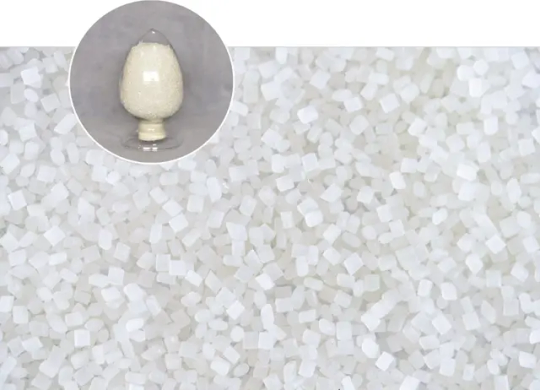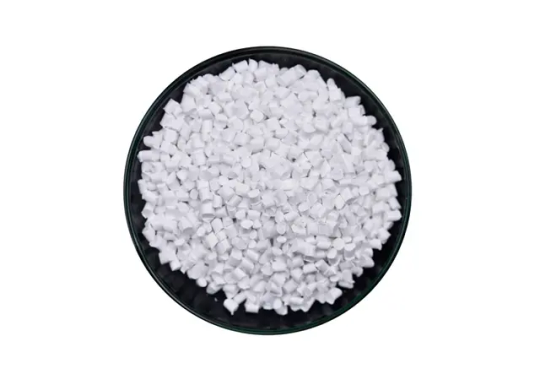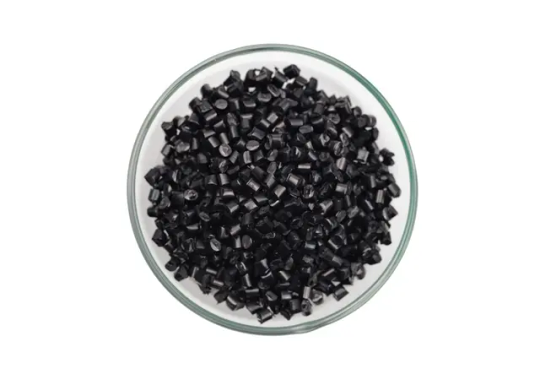Zhejiang Honye founded in 2010 is a National High-tech Enterprise, specializing in color and functional masterbatches, meltblown materials, biodegradability materials and other modified polyolefins for packaging, healthcare,synthetic fibers,transportation, and other industries. The backbone team has 20 years of experience. Honye has advanced technology, equipment and high R&D capabilities,and passes the ISO-9001 certification.Embracing the mission of "Shaping" the future with precision and sincerity, Honye takes it as its own responsibility to become a technology pioneer and a market leader in multiple rubber and plastic subdivisions. Honye perseveres in the business philosophy of creating value, sharing progress and win-win cooperation. Looking forward to working together with you to create a better future! https://www.honyemb.com/
Don't wanna be here? Send us removal request.
Text
MELTBLOWN NONWOVEN FABRIC MATERIALS
Meltblown nonwoven materials are developed through different technologies to increase the melt flow rate, reduce the abrasion of the spinneret during processing, and shorten the production process. Customization in accordance with various specifications.
What Is The Purpose Of Meltblown Nonwoven Fabric?
Meltblown nonwoven fabric is primarily used as a filtration material for various products such as masks, air filters, and medical gowns and drapes. It can also be used as a barrier material in hygiene products and packaging materials.
What Are Some Common Applications Of Meltblown Nonwoven Fabric?
Meltblown nonwoven fabric is commonly used in the production of masks, air filters, and hygiene products such as wipes and sanitary pads. It is also used in medical applications such as surgical gowns and drapes, and in packaging materials.
What Are The Advantages Of Using Meltblown Nonwoven Fabric?
The advantages of using meltblown nonwoven fabric include its high filtration efficiency, lightweight and breathable properties, and ability to be formed into various shapes and designs.
https://www.honyemb.com/products/meltblown-nonwoven-fabric-materials.html

0 notes
Text
INJECTION MOULDING/THERMOFORMING MASTERBATCH
Masterbatches for injection moulding/thermoforming are additives used to improve and enhance the performance of plastics used in injection moulding or thermoforming processes. These masterbatches contain concentrated amounts of pigments, additives, or fillers that boost the properties of the plastic, such as color, UV resistance, and surface finish.
TYPES OF INJECTION MOLDING OR THERMOFORMING MASTERBATCHES
White Masterbatch
It provides excellent resistance against ultra violet, weathering, heat, and light.
Black Masterbatch
It provides excellent color consistency and improved mechanical properties to the final product.
Universal Color Masterbatch
Universal Color Masterbatch contains a high concentration of pigments or dyes, dispersed in a carrier resin
Custom Color Masterbatch
Color masterbatch is a polymer carrier designed to add vibrant and consistent colors to plastic products.
Transparent Color Masterbatch
Transparent color masterbatch is used in such as food containers, cutlery, toys, and household items.
Clarify Masterbatch
Clarify masterbatch enhances the heat resistance and rigidity of the product, ensuring it is safe for food contact.
Nucleating Masterbatch
Add Ratio: 1%-3% or depend on desired performance.
Antifog Masterbatch
Antifog Masterbatches is food grade which is used in food packaging industry.
Cold-resistant and Toughening Masterbatch
Cold-resistant and Toughening additive masterbatch has good compatibility without affecting transparency of the product.
How Are Masterbatches Added to Plastics Used in Injection Molding or Thermoforming?
Masterbatches for injection molding or thermoforming can be added to plastics through direct mixing or masterbatch dosing systems. Direct mixing involves adding the masterbatch pellets to the plastic material in a container or mixing equipment and blending them together until the desired level of dispersion is achieved. Masterbatch dosing systems are automated feeding systems that dispense a precise amount of masterbatch into the molten plastic during production. These systems improve process efficiency, reduce material waste, and enable more consistent color and property results. The appropriate method for adding masterbatch to a plastic depends on the specific manufacturing process and material requirements for the final product.
What Are the Benefits of Using Masterbatches in Injection Molding or Thermoforming Processes?
Using masterbatches in injection molding or thermoforming processes can provide several benefits. Firstly, adding masterbatch can improve the overall performance of the plastic by enhancing properties such as color, UV resistance, antistatic, and flame retardancy. This, in turn, can help reduce the production costs and provide a better quality of the final product. Additionally, masterbatches offer a more efficient way of adding additives to plastics, reducing waste, and conserving resources. Using masterbatches can also help improve the appearance and aesthetic quality of the finished product, making it more appealing to customers.
What Plastics Can Be Used with Masterbatches for Injection Molding or Thermoforming?
A variety of plastics can be used with masterbatches for injection molding or thermoforming, including polyethylene (PE), polypropylene (PP), polystyrene (PS), acrylonitrile butadiene styrene (ABS), and polyvinylchloride (PVC). The specific type of plastic chosen will depend on the intended use and desired properties of the final product.
What Is the Shelf Life of a Injection Molding or Thermoforming Masterbatch?
The shelf life of a masterbatch for injection molding or thermoforming can vary based on the specific product, but in general, they can be stored for up to two years if kept in a cool, dry place away from direct sunlight and sources of heat.
https://www.honyemb.com/products/masterbatches-for-injection-moulding-thermoforming/

0 notes
Text
FUNCTIONAL MASTERBATCH
Functional masterbatches are high-performance additives utilized in the plastics industry designed to enhance or modify certain physical and chemical properties of plastics. Common types of functional masterbatches include UV stabilizers, flame retardants, antistatic agents, and antioxidant masterbatches among others.
TYPES OF FUNCTIONAL MASTERBATCHES
Softening Masterbatch
Softening masterbatch can be combined with color and other additives to meet your requirements.
Antimicrobial Masterbatch
Antimicrobial masterbatches is commonly used in applications that require a high level of hygiene
Hydrophilic Masterbatch
Hydrophilic masterbatch is non-toxic, harmless, eco-friendly, with excellent water absorption and retention properties.
Anti-static Masterbatch
Anti-static Masterbatches reduces the accumulation of dust that keep the film's appearance clean and clear.
UV Stabilizer/Absorb Masterbatch
UV stabilizer masterbatch offers superior protection against acidic substances such as pesticides and acid rain.
Flame Retardant Masterbatch
Application: part thickness, and desired flame retardant effectiveness all influence the amount of addition.
Fragrance Masterbatch
It is designed to enhance the sensory experience of various products by incorporating food-grade fragrances.
Cooling Masterbatch
Cooling masterbatches can extend the lifespan of equipment by reducing wear and tear caused by high temperatures.
Electret Masterbatch
Electret Masterbatches are used in the production of products in various fields such as electrostatic spinning, electrostatic dust removal, and air filtration.
Antiblock Masterbatch
Antiblock Masterbatch is used to enhance the surface properties of plastic film.
READ MORE
Slip Masterbatch
Slip Masterbatch
A slip masterbatch is used in the film industry to enhance the slip characteristics of plastic films.
PPA Masterbatch
Add Ratio: 1.0% or depend on desired performance.
Clarify Masterbatch
Clarify masterbatch enhances the heat resistance and rigidity of the product, ensuring it is safe for food contact.
Nucleating Masterbatch
Add Ratio: 1%-3% or depend on desired performance.
Antifog Masterbatch
Antifog Masterbatches is food grade which is used in food packaging industry.
Cold-resistant and Toughening Masterbatch
Cold-resistant and Toughening additive masterbatch has good compatibility without affecting transparency of the product.
Conductive Masterbatch
It is a type of plastic additive used to impart electrical conductivity to plastic products.
What Are the Features of Functional Masterbatches?
The features of functional masterbatches will vary depending on the type of masterbatch used. However, typical features may include improved durability, increased UV or heat resistance, enhanced flame retardancy, antimicrobial or antistatic properties, and improved slip or processing characteristics. These features can help enhance the performance and value of plastic products.
In What Industries Are Functional Masterbatches Commonly Used?
Functional masterbatches are commonly used in various industries, including construction, packaging, automotive, electronics, medical, and more to improve the properties and durability of plastic materials. The construction industry uses functional masterbatches to improve the weatherability, flame retardancy, and UV stability of plastic building materials, while the packaging industry can use functional masterbatches to extend the shelf life and appearance of food products. The automotive industry may use functional masterbatches to improve the mechanical properties of plastic parts, and the medical industry may opt for functional masterbatches that are antimicrobial or have pharmaceutical properties.
Can Functional Masterbatches Be Used in Food Contact Materials?
Yes, functional masterbatches can be used in food contact materials. However, they must meet the applicable regulations and requirements regarding food contact materials, such as those set out by the FDA and EU regulations. The masterbatch must be proven to be safe for contact with food and not cause any harm to human health.
Can Functional Masterbatches Improve Processing Efficiency?
Yes, functional masterbatches can improve processing efficiency by a variety of ways. Some functional masterbatches improve the slip and anti-blocking properties of plastic materials, making them easier to process, others provide better antistatic characteristics, reducing the accumulation of dust or static charge during the manufacturing process, and some others help in improving the processing rates and reducing the production costs.
https://www.honyemb.com/products/functional-masterbatch/

0 notes
Text
FRAGRANCE MASTERBATCH
Fragrance Masterbathes are designed to enhance the sensory experience of various products by incorporating food-grade fragrances like lavender, lemon, pine, mint, or cologne. With their slow-release formula, they can maintain their delightful aroma for more than 100 days. This feature ensures that the product retains its pleasing scent for an extended period, providing customers with a long-lasting sensory experience.
Note:
Please store the Fragrance Masterbathes in a cool, dry place and keep them sealed.
Due to the potential loss of fragrance over time, it may be necessary to increase the amount used based on the storage duratio.
Specifications of Fragrance Masterbatch
MFI
20~50g/10min (Pressure 2160g, Temperature 230℃)
Add Ratio
1-3% or depend on desired performance
What Are The Benefits Of Using Fragrance Masterbatch?
The benefits of using fragrance masterbatch include adding a unique scent and sensory experience to the plastic product, improving product appeal, and being customizable for specific applications.
What Are The Applications Of Fragrance Masterbatch?
Fragrance masterbatch is commonly used in personal care, home care, and automotive industries for products such as air fresheners, cleaning products, and car interiors, and more. It can be added to a wide range of plastic materials for custom scents and applications.
https://www.honyemb.com/products/fragrance-masterbatch.html

0 notes
Text
FOAMING MASTERBATCH
Foaming Masterbatch is a type of additive masterbatch that is used to create a foam structure in plastic products. It usually contains a combination of foaming agents, nucleating agents, and blowing agents that expand when heated to create a cellular structure, reducing the weight and density of the plastic product. The foam structure also provides insulation and acoustic properties.
TYPES OF FOAMING MASTERBATCH
Black Masterbatch
Black Masterbatch
It provides excellent color consistency and improved mechanical properties to the final product.
Universal Color Masterbatch
Universal Color Masterbatch contains a high concentration of pigments or dyes, dispersed in a carrier resin
Custom Color Masterbatch
Color masterbatch is a polymer carrier designed to add vibrant and consistent colors to plastic products.
Conductive Masterbatch
It is a type of plastic additive used to impart electrical conductivity to plastic products.
Flame Retardant Masterbatch
Application: part thickness, and desired flame retardant effectiveness all influence the amount of addition.
How Is a Foaming Masterbatch Added to Plastic?
A foaming masterbatch can be added to plastic using a gravimetric dosing system, volumetric dosing system, or by manually mixing the masterbatch with the plastic pellets. The masterbatch is typically added to the plastic in a ratio of 1-5%, depending on the desired foam density and thickness.
What Are the Advantages of Using a Foaming Masterbatch?
Using a foaming masterbatch can reduce the weight and density of plastic products, provide insulation and acoustic properties, and improve surface appearance. Foamed plastics are also less expensive and use less polymer than solid plastics, making them an economical and environmentally friendly option.
What Types of Products Can Be Made with a Foaming Masterbatch?
Foaming masterbatch can be used to make a wide range of plastic products, including packaging materials, automotive parts, insulation materials, construction materials, toys, sporting goods, and furniture. The foam structure can also provide cushioning and shock-absorbing properties, making it suitable for use in protective packaging and transportation applications.
Are There Any Limitations or Drawbacks to Using a Foaming Masterbatch?
The use of a foaming masterbatch can potentially affect the mechanical properties of the plastic product, such as impact strength and flexural modulus. The expansion and cooling of the foam can also affect the dimensional stability of the product. It is important to consider these factors when using a foaming masterbatch.
https://www.honyemb.com/products/foaming-agent-masterbatch/

0 notes
Text
FLAME RETARDANT MASTERBATCH
In accordance with RoHS Compliance, flame retardant masterbatches strengthen resistance to ignition, cut down on flame spread, stifle the production of smoke, stop a polymer from dripping, and can prevent items from turning yellow. Products made with 1.5%–3% flame retardant masterbatches comply with BS–5852.
Note: The filler will result in the failure of the flame retardant.
Application: part thickness, and desired flame retardant effectiveness all influence the amount of addition.
Specifications of Flame Retardant Masterbatch
MFI
60g/10min (Pressure 2160g, Temperature 230℃)
Add Ratio
1.5%-3% or depend on desired performance
What Are The Benefits Of Using Flame Retardant Masterbatch?
The benefits of using flame retardant masterbatch include reducing the risk of fire and improving safety, complying with regulations and standards, and being customizable for specific applications.
What Are The Applications Of Flame Retardant Masterbatch?
Flame retardant masterbatch is commonly used in industries such as construction, automotive, electronics, and consumer goods for products such as cables, wires, housings, and furniture.
https://www.honyemb.com/products/flame-retardant-masterbatch.html

0 notes
Text
FILM MASTERBATCH
Film masterbatch is a type of color masterbatch that is used to add color to plastic films in a variety of industries, including packaging, agriculture, and construction. It is typically composed of high-quality pigments and carrier resins that are dispersed evenly throughout the plastic film during the extrusion process.
TYPES OF FILM MASTERBATCH
Anti-static Masterbatch
Anti-static Masterbatches reduces the accumulation of dust that keep the film's appearance clean and clear.
Antiblock Masterbatch
Antiblock Masterbatch is used to enhance the surface properties of plastic film.
Slip Masterbatch
A slip masterbatch is used in the film industry to enhance the slip characteristics of plastic films.
PPA Masterbatch
Add Ratio: 1.0% or depend on desired performance.
Laminating Modified Polyolefin
Laminating Modified Polyolefin has excellent dispersion and stable melt flow rate.
How Is Film Masterbatch Added to Plastic Film?
Film masterbatch is added to plastic film through a process called extrusion. The masterbatch is first mixed with the plastic resin pellets and then melted together in an extruder. The molten mixture is then passed through a die to form a thin film, which is then cooled and wound onto a roll.
WHAT TYPES OF FILMS ARE PRODUCED WITH FILM MASTERBATCH?
What Types of Films Are Produced with Film Masterbatch?
Film masterbatch is used to produce a wide range of plastic films, including packaging films, agricultural films, construction films, and industrial films. These films can have various properties such as UV resistance, antistatic properties, antimicrobial properties, and flame retardance, among others, depending on the type of masterbatch used.
WHAT IS THE SHELF LIFE OF FILM MASTERBATCH?
What Is the Shelf Life of Film Masterbatch?
The shelf life of film masterbatch depends on the type of masterbatch and the storage conditions. Typically, most film masterbatch has a shelf life of 12 to 24 months when stored in a cool, dry, and well-ventilated area, away from direct sunlight, heat, and moisture, and in its original packaging.
WHAT ARE THE CONSIDERATIONS FOR CHOOSING A FILM MASTERBATCH?
What Are the Considerations for Choosing a Film Masterbatch?
When choosing a film masterbatch, considerations include the type of polymer used in the film, desired properties of the film, such as color or additives, processing conditions, and end-use application requirements, such as durability or barrier properties. It's also important to consider the compatibility and dispersibility of the masterbatch with the polymer.
https://www.honyemb.com/products/film-masterbatch/

1 note
·
View note